it’s a quite some time has passed since the beginning of July when we posted about the start-up ramp that carefully calibrated, programming a complex integrated circuit with some logic (i.e. ramps, voltage thresholds, internal ways of making the PWM regulator work, and so on) and when the Complex Programmable Logic Device (CPLD) (Lattice LCMXO640C-3TN100C FPGA) was programmed for the very first time in order to manage all external peripherals connected to it.
In July we figured out that a Jtag Debugger was very needed to debug our Powerboard Tyche, the only way to solve the causes of not seeing any U-Boot output. We were able to buy such a debugger thanks to the donations we are collecting with the current campaign, we thank all donors for their support.
The debugger is the NXP CWH-CTP-BASE-HE Jtag Debugger + NXP CWH-CTP-COP-YE “Probe Tip, Removable, For Power Architecture Processors, JTAG to CodeWarrior TAP Base Unit” and, together with one of the three prototypes, we shipped it in August to Max Tretene that kindly accepted to be directly involved in the debug process of the motherboard. Soon, the task proved to be quite challenging, so after an internal discussion, we decided to offer Max a reimbursement for all the time he was spending on the job, a reimbursement that was made possible to the donations we are receiving with the current campaign.
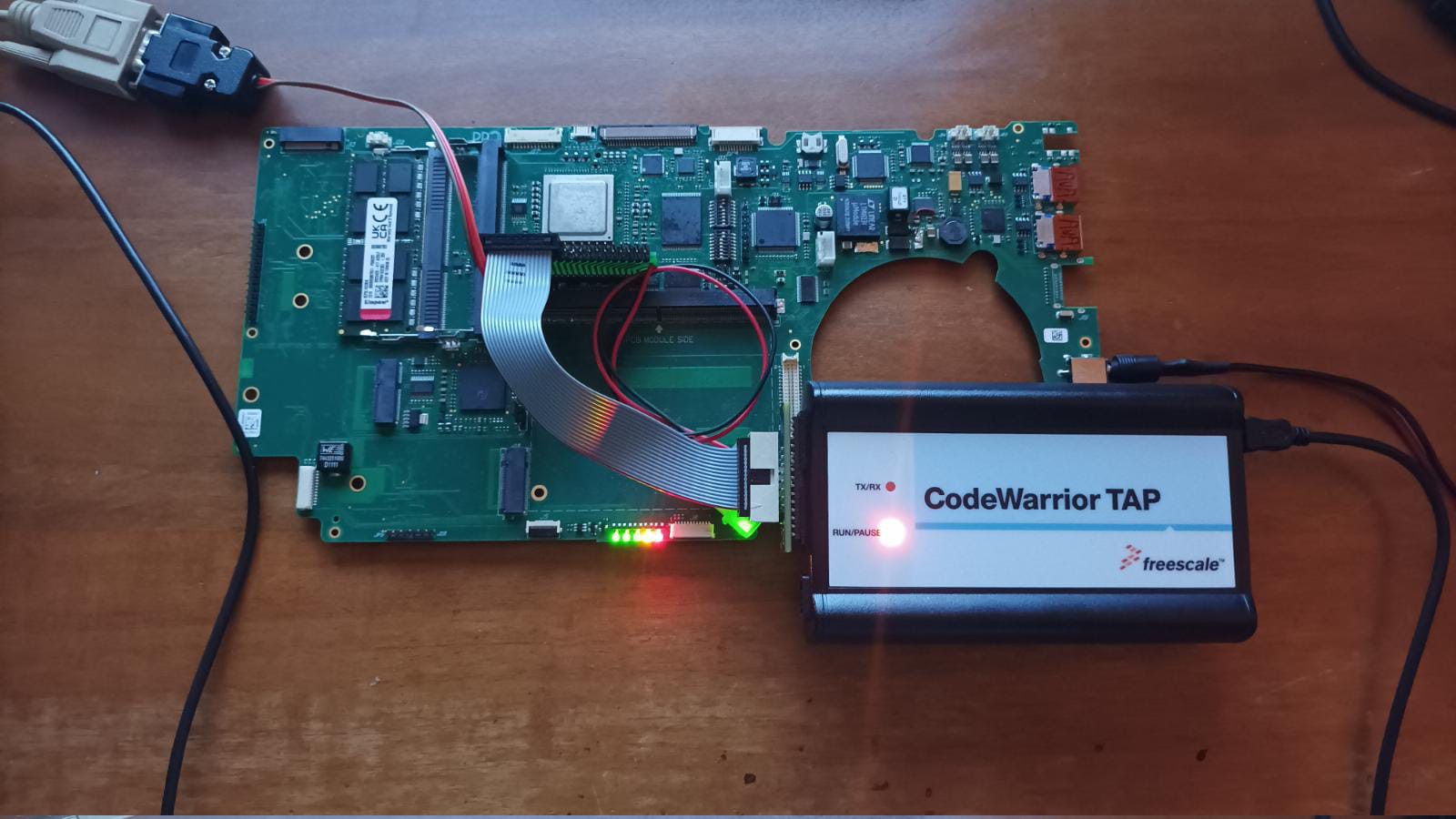
Dealing with hardware debugging is quite a hard and tedious job, and it was not easy to see something useful on the Jtag Debugger connected to the prototype motherboard. An additional adapter was required to attach the debugger because of the difference in the pin dimensions (2 vs 2.5). Max found it quite useful using the jtag debugger with our NXP T2080-RDB Devkit that was also shipped to him, because it allowed to test the procedure on a working platform and helped understanding the right configurations of the switches to boot up the board.
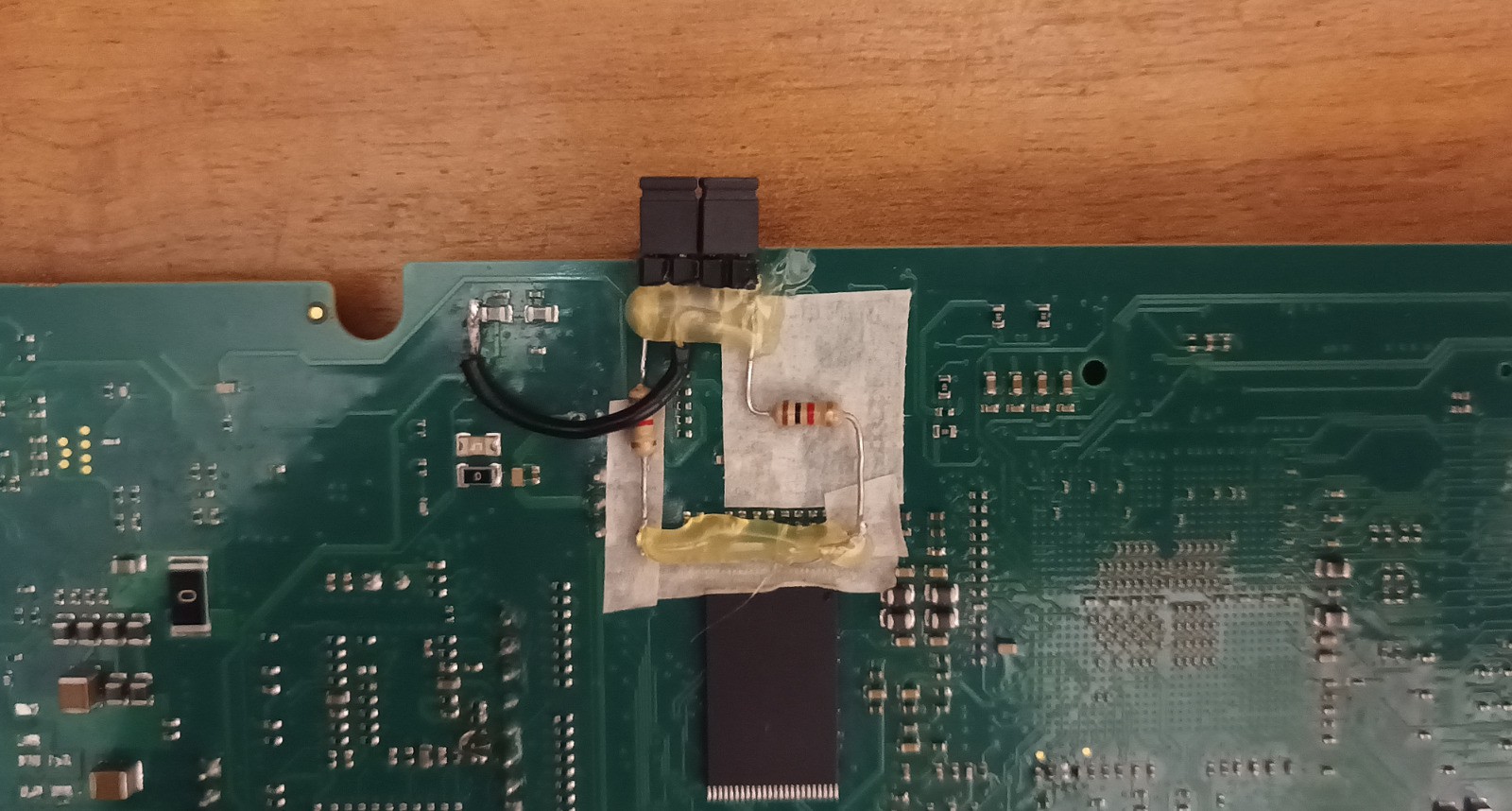
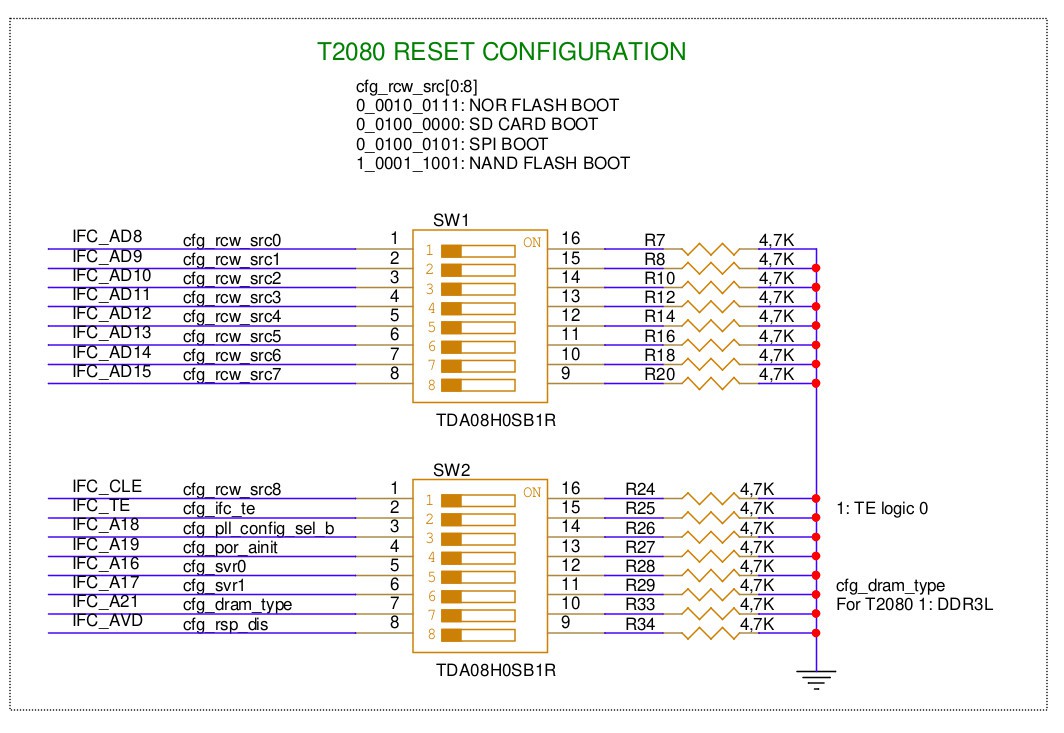
As our PowerBoard Tyche have not the third switch like the NXP T2080-RDB Devkit a few additional resistors were required to setup correctly the board to be able to switch on the Code Warrior debug connected to our Powerboard Tyche. Not just that, an additional update to the CPLD chip was required to setup the debugging system correctly. Finally, on the 16 of October, Max was able to see some sign of life from the NXP T2080 CPU on SRAM and on NAND Memory, as you can see in the screenshots below. These days we are working on NOR programming, waiting in the meantime for a CPLD update from the hardware designer. The NOR programming is needed to have access to the DDR and then start U-Boot.
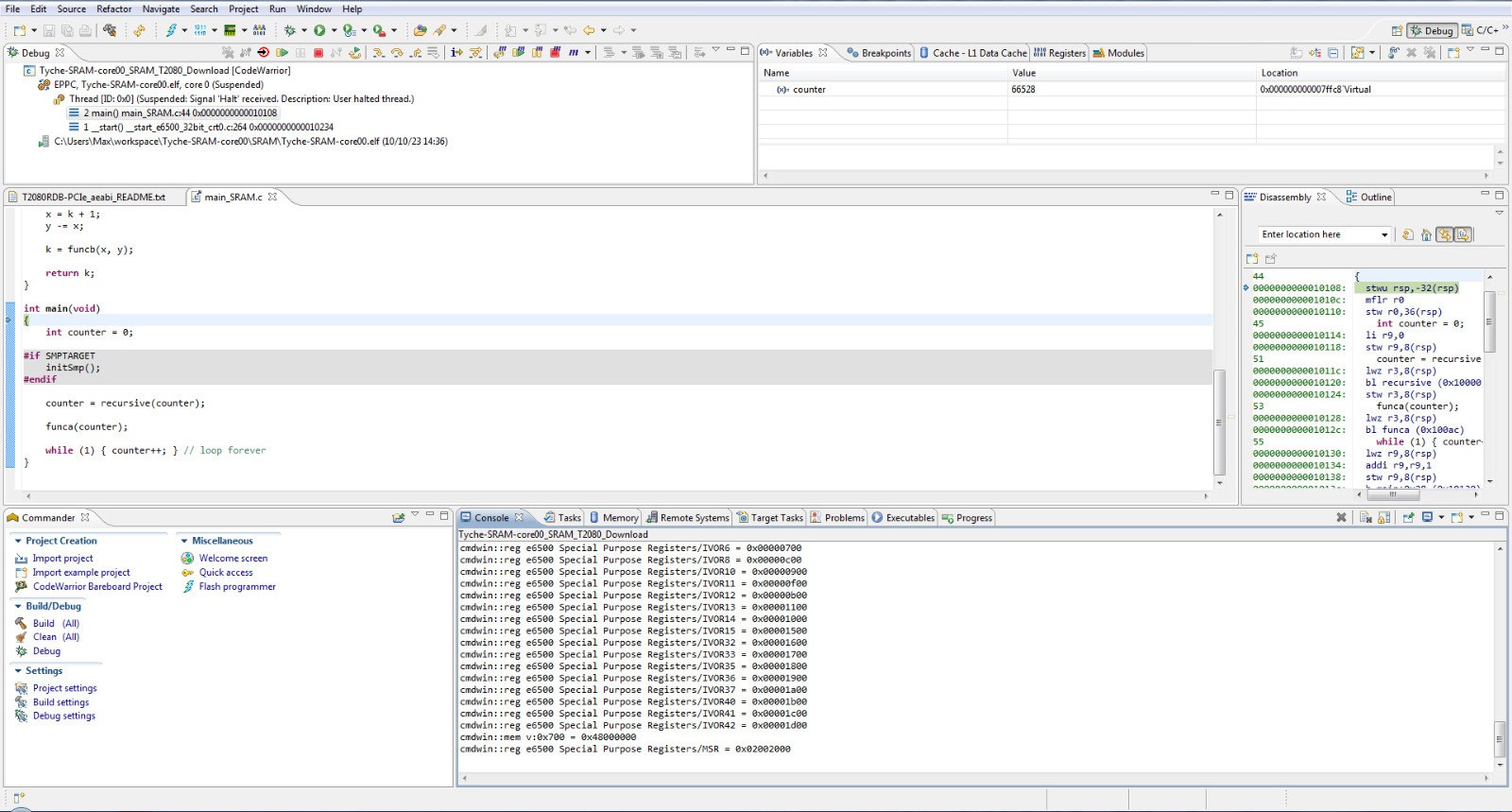
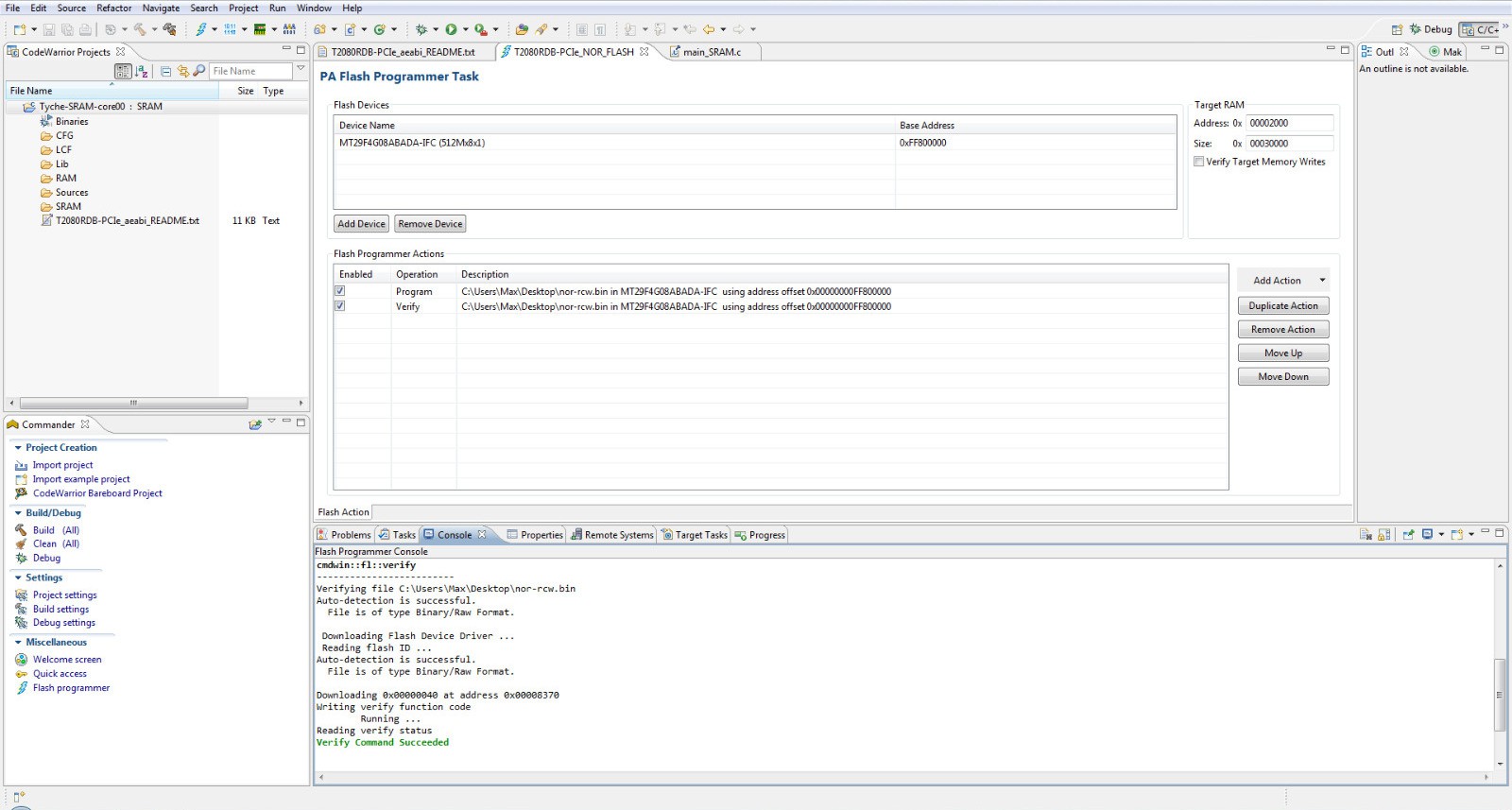
Some possible changes to the hardware design
All these hardware tests were useful for planning some changes to the hardware design: few missing resistors for enabling the u-boot switches must be added and we need to move one chip because it does not fit quite right in the eclipse chassis.
The recent worldwide electronic components shortages we faced when making the prototype Powerboard Tyche boards caused an unexpected -and incredible- increase of the prices. More recently chip prices seem to be coming back to more reasonable prices, with the exception of the Marvell Sata3 controller.
As a consequence, we are evaluating the removal of the Marvell Sata3 controller to both free very-much needed space space and save some costs because at the moment such a chip costs around 90 euros per piece, quite a lot.
In fact, nowadays most SSD are available at a very good price with the M.2 form factor, so a Sata3 connection is not that essential anymore. People in a desperate need for a Sata connection could use the two Sata2 controllers inside the T2080 CPU.
Below we list the availability and prices of
- Marvell Sata 3 controller 88SE9235A1-NAA2C000, in 2022 we had payed around 130 euro per piece + VAT, 1 per PCB, total 3 pieces. NOW Win Source In Stock, 3450 pieces 87 euro
- TPS544B20RVFT 4.5-V to 18-V, 20-A synchronous SWIFT buck converter with PMBus programmability and monitoring in 2022 we had payed around 550 euro per piece + VAT, 1 per PCB, total 3 pieces NOW: TI Website: 2000 pieces around $8 per piece
- 6-port, 12-lane, PCIe 2.0 Packet Switch PI7C9X2G612GP – Diodes in 2022 we had payed it around 250 euro per piece + VAT, 1 per PCB, total 3 pieces NOW Digikey 121 pieces 25 euro per piece
- Surge Suppressors 100V OV, UV, OC and Reverse Supply Protection Controller with -50mV Reverse Threshold LTC4368IDD-1#PBF in 2022 we had payed it around 100 euro per piece + VAT, 1 per PCB, total 3 pieces NOW Mouser 2.191 Unit Price around 4-5 Euro
Compile and test of an updated version of U-Boot
We hired Bas Vermeulen to obtain a running version of the most recent version of U-Boot on both the NXP T2080-RDB Devkit and on the Powerboard Tyche prototype. In addition, we asked him to develop an AMD/ATI Radeon driver for U-Boot, a work that he carried out last August. The results of his effort is publicly available on our GitLab U-Boot repository.
Unfortunately, until our Powerboard Tyche will not be able to reach the U-Boot startup process, Bas will be limited in developing and testing U-Boot on the NXP T2080-RDB Devkit. For that reason, Max Tretene is actively supporting Bas in testing the U-Boot binaries generated by Bas on the Devkit.
As you can see on our U-Boot gitlab repository, Bas was hard at work compiling very recent versions of U-Boot during last August. Unfortunately, because of causes of force majeure, Bas was unable to continue working during September, but he should be back on track the very next days.
Below a short list of the main issues Bas is working on:
- The ati_radeon_fb driver is no longer present
- Configure the device tree to support the correct PCI spaces
- Create a driver for the AMD/Radeon GPU
We finally thanks again for your support and donations that allow us to finance all these activities, greatly facilitating reaching our goal in a reasonable amount of time: a very good quality PowerPC based notebook release as open hardware.
We still do not have yet a formal quotation of the design of the heat pipes for cooling down both the CPU and the MXM video card. Informally, we estimated approximately 10000 euros. At the moment we are very much focused in making the Powerboard Tyche prototypes working, at least up to the point of being able to launch U-Boot.
 Roberto Innocenti
Roberto Innocenti
Discussions
Become a Hackaday.io Member
Create an account to leave a comment. Already have an account? Log In.